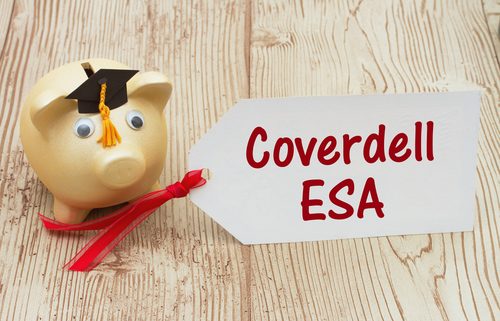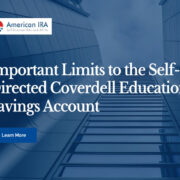Is it Time for a Self-Directed CESA?
Savings can be one of the most potent indicators of the health of an economy. When investors have a lot of savings, it’s true that they’re not spending as much—but they are preparing the capital for major investments that can lead to long-term gains. That’s especially the case for parents who are planning for long-term investments in the success of their children. To accomplish that, many investors turn to a Self-Directed CESA to maximize their return on investment and protect these investments during the duration of the account’s existence.
What is a Self-Directed Coverdell Education Savings Account, and what benefits does it offer? Here’s what you’ll have to know.
The Benefits of the Self-Directed Coverdell Education Savings Account
First things first: why use a Self-Directed CESA in the first place? It’s because it enables investors to use tax benefits to protect the growth of their savings while they put money away for the future education of their children, or to beneficiaries. To explore how that works, let’s take a quick look at some of these benefits.
- Tax-free growth. The contributions you make toward a Self-Directed CESA are not tax-deductible. But this doesn’t mean that you aren’t getting any tax savings. Instead, this money will be allowed to grow tax-free within the account.
- Tax benefits if the distributions are less than qualified education expenses. A Self-Directed Coverdell Education Savings Account is not quite like a Roth IRA, in which case you can use tax-free distributions because you’ve already paid the taxes on the money upfront. However, if it turns out that the distributions on the account are less than qualified education expenses, these distributions may potentially be tax-free.
- Naming a beneficiary. One of the key tools in using a Self-Directed CESA is to name a beneficiary. Typically, this is an individual, such as a son or daughter, who is under the age of 18—the point of the Self-Directed Coverdell Education Savings Account is to save money toward their eventual education expenses. However, it’s also possible to name a special needs beneficiary with a Self-Directed Coverdell Education Savings Account—a beneficiary who can be older than that age limit.
Using a Self-Directed Coverdell Education Savings Account
You’ll notice that we use this phrase “Self-Directed” a lot. What does it mean in the context of a Self-Directed Coverdell Education Savings Account? It means that you’ll be the one in charge of where your assets go within the account. By working with a Self-Directed IRA custodian, you can decide how the portfolio of the Self-Directed CESA looks, which gives you the freedom to invest in a wide range of assets.
Remember: this is not a retirement account. As such, your timeline on a Self-Directed Coverdell Education Savings Account might look different. You may not want to rely on stocks and bonds offering returns in the long run. You may instead want to rely on asset classes in which you have more experience. This can help you build a hefty sum within the account even though you’ll be capped when it comes to the contributions you can make in the Self-Directed Coverdell Education Savings Account until it’s time to use it. But with self-direction, the wiser the investments you make, the better the returns can potentially be.
Interested in learning more about Self-Directed IRAs? Contact American IRA, LLC at 866-7500-IRA (472) for a free consultation. Download our free guides or visit us online at www.AmericanIRA.com.






